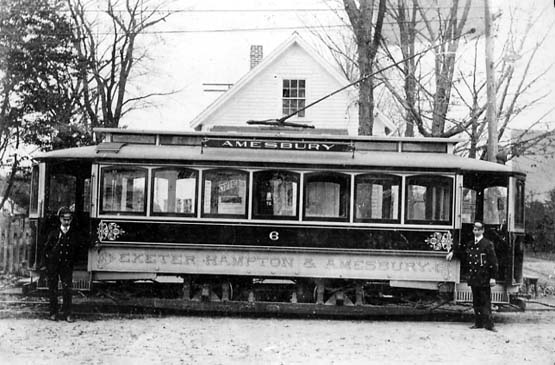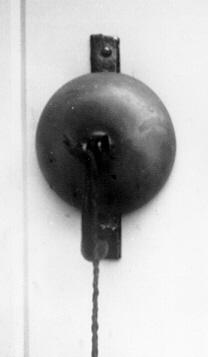By John M. Holman, Contributing Writer
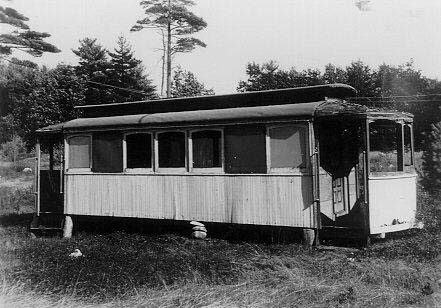
{Photo below, AFTER …. The Trolley House, ca. 1970.}

Pass by the little stone house at 303 Mill Road, Hampton, and you’d never guess what it really is — a trolley car from the “Trolley Era of Hampton!”
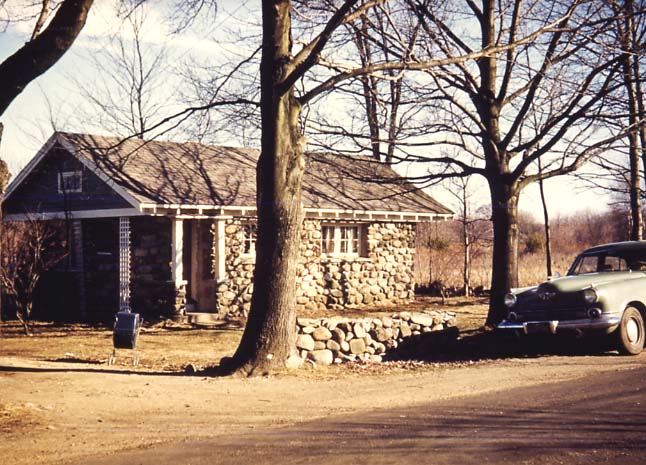
Originally the property of the Exeter, Hampton & Amesbury Street Railway Company (The EH&A, as it was commonly called), abandoned in December 1926, the trolley car-home was the idea of Ernest L. White, a stone mason of note and carpenter.
a 20-foot four-wheel closed car,
at Smithtown Square, Seabrook, about 1900.
Note the headlights on the vestibule hoods.
(Photo courtesy O. R. Cummings.)
In 1934, Mr. White purchased a trolley car body, No. 6, [built by the Briggs Carriage Company of Amesbury, Massachusetts in 1897], without trucks or wheels, had it moved to the Mill Road site and proceeded to enclose it with field stones and cement, completely encasing it.
Since stone walls were in great abundance in the area, it was a relatively easy task to locate sufficient stones to complete the job. A wheel barrow was used to cart the stones from the walls to the site of the reconstruction, a few at a time, which was extremely back-breaking and time consuming work. (Writer’s note: I know, for I assisted Mr. White, so to speak, with the hauling of the stones from time to time.)
When the stones and mortar were finally in place, the entire trolley car body was obscured from view, completely encased in stones, with the exception of the doors and windows. At the time of the completion, the sliding trolley doors were left intact and operating.
The trolley bell had been removed previously and served as a call-bell at nearby WAYSIDE FARM for many years for the convenience of the customers purchasing vegetables there. After the passing of Marshall Holman of Wayside Farm, the farm was sold by Mrs. Holman in 1966.
Although no photos are available during the construction of the house, a 1935 diary of Mrs. White’s reveals the following entries:
“March 2, 1935 — Showers, 38 degrees to 48 degrees — a real March day. I went down to the little stone house today, the first time since last fall and was surprised to find how much had been done and more room than I expected. You wouldn’t think an old trolley car would make such a cute little place.”
“May 3, 1935 — Cold 30 to 48 degrees — Clouded up and hailed today. Made curtains for the little stone house and they look cute if I do say so myself.”
“May 6, 1935 — Fine – We have sold the stone house to a Mr. Campbell from Exeter. He is a nice old fellow, a widower and wants to fix it up for a home for himself when he retires. He is stone deaf.” (Mr. Campbell was a dish-washer at BURKE’S DINER in Hampton, site of the BURGER-KING on Lafayette Road.
Other E.H.&A. car bodies became the kitchen of the Hampton Diner in Hampton Center (razed in 1967) and a children’s playhouse on Exeter Road, now both gone.
Former purchasers of the “Stone House Trolley” saw it as a fitting tribute to the “Trolley Era of Hampton — 1897-1926”. And as the song goes, as made popular by Judy Garland in the 1944 movie ‘Meet Me In St. Louis,’ “Clang, Clang, Clang Went The Trolley; Ding, Ding, Ding Went The Bell ……..”
“When Ernest L. White, engineer at the pumping station of the Hampton Water Works, has nothing else on his mind, he builds a cottage or two on the Mill Road. He has already put up six — small and inexpensive, but comfortable, convenient and attractive. One of these is occupied by his son, John, another by his daughter, Alice (Mrs. Fred Dalton), and a third by Mr. White’s mother. His latest architectural achievement is to take a trolley car [see 1st photo in article & below] that once was part of the rolling stock of the Exeter, Hampton and Amesbury Street Railway (old No. 6), cover it with a veneer of field stone, run out an extension on the rear; and the result is a three-room house with kitchenette, nearly ready for occupancy. Mr. White is engineer, architect, builder, traveler, author, poet, or what have you. The record of his adventures in Mexico thirty years ago has been running in the local paper in weekly instalments and is read by a large clientele. We suggest that when Mr. White is not looking after the pumping station, or transforming trolley cars into tenements, he write a “Western.”}

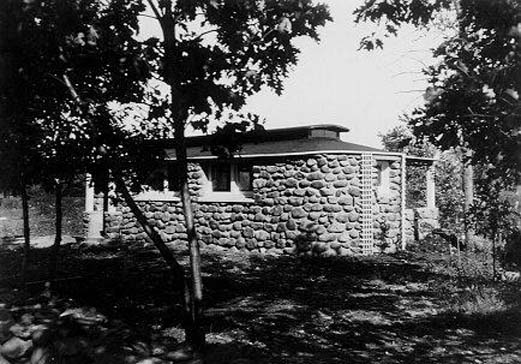

[Above 3 photos courtesy Glen Dalton, grandson of Mr. White.]

January 2004.
